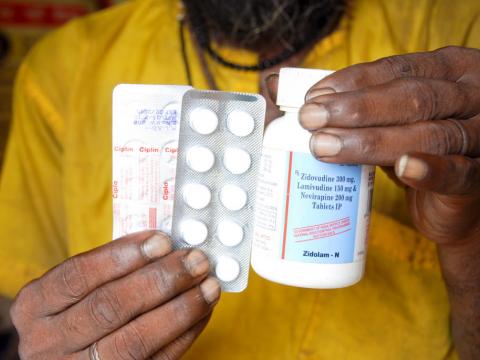India: AIDS Day to AIDS Night?

Drug stock-outs, budget cuts and a stalled HIV Bill hamper the war against AIDS
India’s fight with AIDS has come a long way since the first HIV case was reported in 1986. Between 2000 and 2011, India witnessed a 57% decline in new HIV infections. Between 2005 and 2013, we saw a 38% decline in AIDS-related deaths and now, the country has a relatively low adult HIV prevalence rate of 0.3%.
As we observe the World AIDS Day this year, India can indeed cheer its progress in reduced new infections, discrimination and deaths. The country is on track to end the AIDS epidemic by 2030, with a more than 20% decline in new HIV infections between 2000 and 2014 reversing the spread.
How did this success come about?
The arrival of generic antiretroviral therapies (ARTs) and Cipla slashing the cost of ARTs by 97% in 2001 made it possible for India to roll out a free ART program at the end of 2004 – which in turn became a lifeline for over 750,000 people living with HIV/AIDS (PLHIV) qualified for it. The availability of ARTs has helped foster the hope that PLHIV can still live with an improved quality of life when provided with care.
But today, the program is ailing due to the acute shortages and stock-outs of drugs, testing kits and diagnostics at government-run ART centres.
In recent months, patients in some districts are unable to procure the mandated 30-day supply of drugs – they now travel long distances to reach the dispensaries, only to be given 3-4 days worth of medication.
Many forego their daily wages simply to procure each tiny dosage of their medication.
The patients, often from socially and economically vulnerable strata of society, are told to return repeatedly for additional small supplies.
Many forego their daily wages simply to procure each tiny dosage of their medication. Due to a scarcity in paediatric ART, children are given adult dosages. Some are forced to return home empty handed, resulting in missed doses, which not only imperil their own health, but also foster a ripe environment for the emergence of more drug-resistant strains of HIV.
There are multiple factors that contribute to the ART shortage– corruption that leads to delayed payments to suppliers, the hostile stance of pharmaceutical companies, and decreased state budgets for AIDS control. However, the biggest factor of them all is the HIV Bill, which is still not a reality even after seven years of relentless efforts by Positive People’s Networks and the Civil Society.
The proposed Bill covers anti-discrimination, right to consent, right to confidentiality, access to treatment, and special provisions for women and children, including property, counselling and care. PLHIV often fall into the ‘most vulnerable’ category, many facing double and triple discrimination – added to by the burdens of caste, class and gender biases.
Lancet’s Defeating AIDS — Advancing Global Health report recommends a massive and comprehensive AIDS response, unless India wants to revisit the pre-2004 days of AIDS-related stigma and escalation in HIV transmission.
One way to do this is to swiftly resolve the dire problem of ART shortages and stock-outs that only serve to widen the gap between those with access to treatment and care and those without. Care for children affected and infected by the virus and implementing sustainable prevention strategies for youth are also crucial.
Prompt action on the pending HIV Bill, with the proposed amendments, can go a long way in solving the majority of concerns. The legislators and policymakers cannot afford to tarry as 2.1 million people affected by the virus are solely counting on their monthly dose of ART drugs for survival.
About the Author: Dr. Rahul Mathew leads Health Projects at World Vision India.